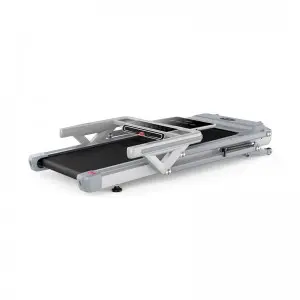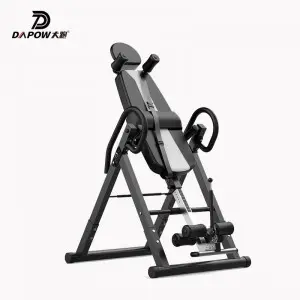In an era where health and fitness are increasingly prioritized, many people are turning to home workouts to stay in shape. However, one common challenge faced by those with smaller living spaces is finding room for fitness equipment. This blog post aims to address that issue by offering practical tips on how to effectively store and utilize space for two popular home fitness items: treadmills and inversion tables. Whether you live in a small apartment or a cozy house, these tips can help you create a functional and efficient home gym without sacrificing valuable space.
The Treadmill: A Folding Solution
Treadmills are a staple in many home gyms, but their size can be daunting for those with limited space. Fortunately, many modern treadmills come with folding designs that make storage a breeze.
Folding Treadmills
-
Design and Functionality: Folding treadmills are designed to fold up vertically or horizontally, significantly reducing their footprint when not in use. This feature is particularly useful for small apartments or homes with limited storage space.
-
Ease of Use: Most folding treadmills are equipped with easy-to-use mechanisms that allow you to fold and unfold the machine with minimal effort. Some models even come with wheels, making it easy to move the treadmill to a storage area.
-
Safety Considerations: When choosing a folding treadmill, ensure that it has safety features such as a sturdy locking mechanism to prevent accidental unfolding during storage.
Storage Tips
-
Vertical Storage: If your treadmill folds vertically, consider storing it in a closet or against a wall. This not only saves floor space but also keeps the treadmill out of sight when not in use.
-
Horizontal Storage: For treadmills that fold horizontally, a corner of a room or under a bed can be ideal storage spots. Make sure the area is clear of obstructions and that the treadmill is stable when stored.
The Inversion Table: Wall-Mounted Storage
Inversion tables are another popular piece of home fitness equipment, known for their benefits in relieving back pain and improving flexibility. However, their size can pose a challenge for small living spaces.
Wall-Mounted Solutions
-
Wall-Mounted Brackets: Many inversion tables come with wall-mounted brackets that allow you to store the table vertically against a wall. This not only saves floor space but also keeps the table out of the way when not in use.
-
Space-Saving Designs: Look for inversion tables with compact designs that can be easily folded and stored. Some models even come with built-in storage solutions, such as hooks for hanging accessories.
Storage Tips
-
Wall Space Utilization: Use the vertical space on your walls to store the inversion table. This can be particularly effective in small apartments where floor space is at a premium.
-
Safety and Stability: Ensure that the wall-mounted brackets are securely installed and can support the weight of the inversion table. Regularly check the brackets for any signs of wear or damage.
Creating a Functional Home Gym
Now that we’ve covered storage solutions for treadmills and inversion tables, let’s discuss how to create a functional and efficient home gym in a small space.
Multi-Purpose Furniture
-
Convertible Furniture: Invest in furniture that can serve multiple purposes. For example, a bench that doubles as a storage unit for fitness equipment can be a great space-saver.
-
Foldable Equipment: Choose fitness equipment that can be easily folded and stored. In addition to treadmills and inversion tables, consider foldable exercise bikes, yoga mats, and resistance bands.
Smart Layout
-
Zoning: Divide your living space into functional zones. Designate a specific area for your home gym and keep it organized and clutter-free.
-
Flexible Arrangement: Arrange your fitness equipment in a way that allows for easy access and movement. For example, place the treadmill near a power outlet and ensure there is enough space around it for safe use.
Decor and Ambiance
-
Motivational Decor: Use motivational quotes, posters, or artwork to create a positive and inspiring atmosphere in your home gym.
-
Lighting: Ensure that your home gym is well-lit. Natural light is ideal, but if that’s not possible, consider installing bright, energy-efficient lighting.
Conclusion
Creating a home gym in a small space doesn’t have to be a challenge. By choosing the right equipment, such as folding treadmills and wall-mounted inversion tables, and implementing smart storage and layout strategies, you can create a functional and efficient fitness area without sacrificing valuable space. These tips can help you maximize the use of your living space and maintain a healthy lifestyle, no matter the size of your home.
For international wholesale procurement agents, showcasing these space-saving solutions can highlight the versatility and practicality of your products. A well-organized home gym can be a powerful selling point, demonstrating that your equipment is designed with the needs of modern consumers in mind. By addressing the common concern of space limitations, you can attract a broader audience and increase the appeal of your products.
Post time: Jul-02-2025



